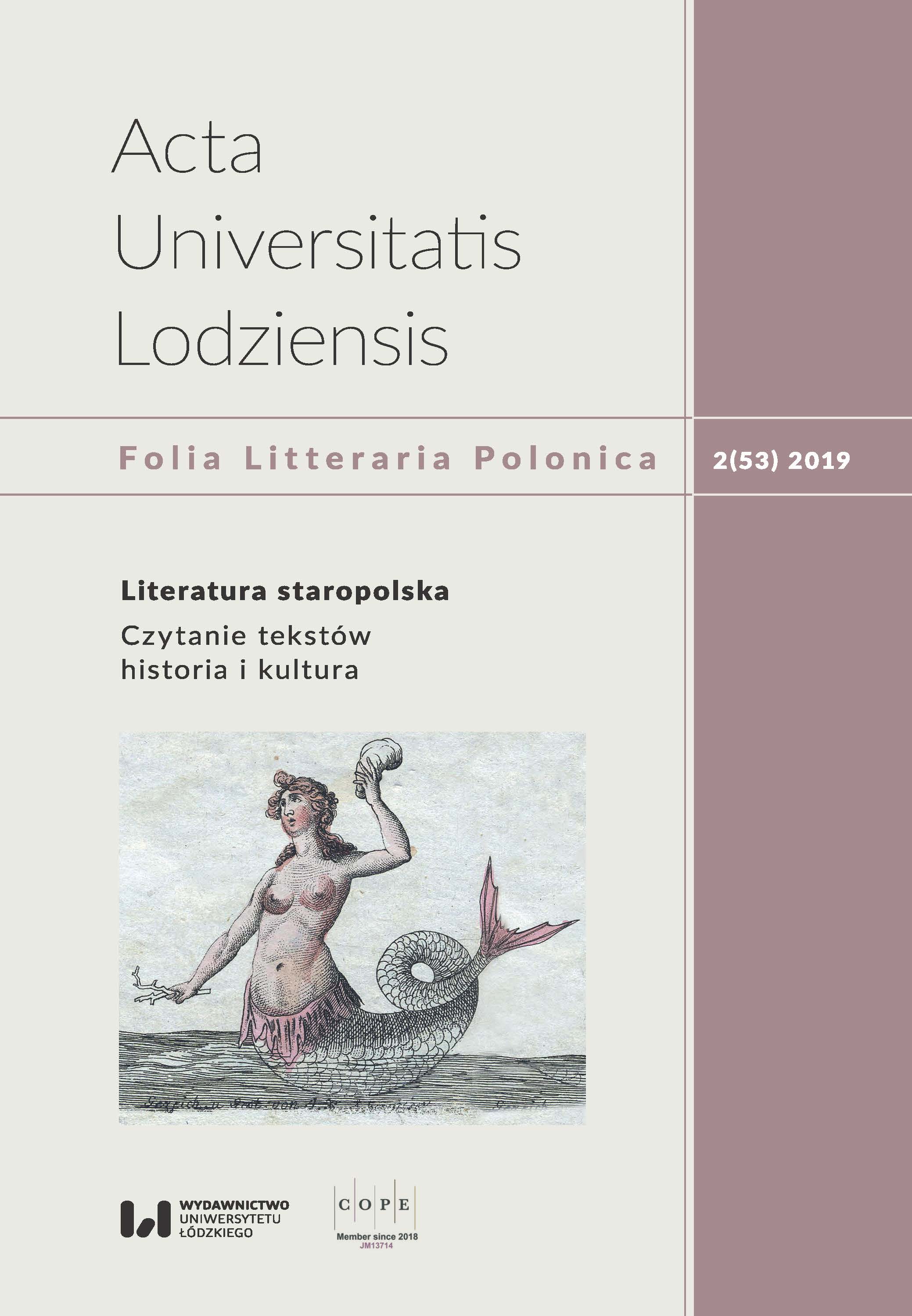Za murami klasztoru. Historiografia lubelskich karmelitanek bosych
Behind Convent Walls. Historiography of Lublin Discalced Carmelite Nuns
Author(s): Anna Nowicka-StruskaSubject(s): Studies of Literature, Theory of Literature
Published by: Wydawnictwo Uniwersytetu Łódzkiego
Keywords: historiography; convents; literature; Baroque; mentality; women; ego-documents; identity; Lublin; city; Discalced Carmelite Nuns; chronicle; manuscripts; spirituality; monasteries
Summary/Abstract: The research on the written works of nuns in homogeneous city space allows to restore the memory of a few generations of women who lived in Lublin, discover their intellectual activity, their literary culture, customs, interests, and their word view. The ego-documents left by the Carmelite Nuns are good materials for the scientific prospect of this isolated group of women and the research microscale remains in the circle of anthropological historical orientation. The Lublin manuscripts, documents and the evidence of intellectual activity of the nuns were completely dispersed in the 19th century. The aim of the article is to merge the knowledge about the discovered texts of Lublin Carmelite Nuns, determine the main features of the texts and name their authors. In my work I have examined a group of “official” papers (a convent visitation book, letters – certamen) and the chronicles of two Lublin monasteries. The first chronicle of the St. Joseph’s Monastery is vast, while the second one from the Immaculate Conception Monastery is only an introductive part of the lost text. The article also enumerates other types of convent writing, such as silva rerum spiritual texts, personal prayer books, the compilation of letters, the adaptations of emblematic collections. The main source of information on Lublin Carmelite Sisters were chronicles. The chronicles were a type of domestic historiography, joining the form of the books of the dead or the vesture books, and a narrative presenting the events from nuns’ lives in chronological order. The chronicle of the first monastery was written from the year 1624 to 1701. The book was written consistently by a few anonymous nuns who differed from each other in terms of their interests, writing skills and ways of outlining the information. The first author of the chronicle (from 1625) was presumably sister Febronia of Jesus. Natural oral tradition, a part from personal experience of the author was the most important source of knowledge about the monastic life. In view of a future reader and in order to make the text historiographical and reliable the authors added letters. The chronicle contains also other texts and exogenic genres. Worth mentioning are one-plot micro narrations which highlight extraordinary literary value of the Carmelites’ chronicles. The micro narrations show the expression of female authors, their ability to present vibrant and fluent narration, and to transfer oral tradition into the chronicle. A tale character of the notes points to the diary features of the text and guides culture researchers to a category of privacy, identity and memory of a small group of women to a significant degree isolated from the outside world. The chroniclers frequently indicated how crucial for the convent was the identity of a group. The opposition “we – they”, “inside – outside (the monastery)”, emphasizing individualism and otherness of the convent, show the far-reaching self-consciousness of the authors.
Journal: Acta Universitatis Lodziensis. Folia Litteraria Polonica
- Issue Year: 53/2019
- Issue No: 2
- Page Range: 79-116
- Page Count: 38
- Language: Polish

